3

MODULE 3

3

MODULE 3
WITH SPOTLIGHT LESSONS ON THE Solar System TEXAS
WITH SPOTLIGHT LESSONS ON THE Solar System
Science Logbook
Student Name:
Great Minds® is the creator of Eureka Math® , Eureka Math2® , Wit & Wisdom®, and PhD Science®
Published by Great Minds PBC greatminds.org
© 2024 Great Minds PBC. Except where otherwise noted, this content is published under a limited public license with the Texas Education Agency. Use limited to noncommercial educational purposes. Where indicated, teachers may copy pages for use by students in their classrooms. For more information, visit https://gm.greatminds.org/texas.
Printed
ISBN 979-8-88588-544-7
Name: LEVEL 3 MODULE 3
Record the Essential Question and the Phenomenon Questions.
Observe the movement of objects and people in space. What do you notice and wonder? I
Observe the motion of the soccer ball on the International Space Station. What do you notice and wonder? I Notice
Name: Date:
LESSON 2 ACTIVITY GUIDE
Draw what a soccer ball on Earth looks like before, during, and after a kick.
How does a soccer ball move on Earth? How are the motions different? Draw a model to show your thinking.
Explain your model.
Compare your model with a classmate’s model. Record similarities and differences between your models.
Name: Date:
LESSON 4 ACTIVITY GUIDE A
You will plan an investigation about the motion of a toy car. To plan the investigation, put these steps in order. On each line, write a number from 1 to 5 to show the order of the steps.
Record your observations and measurements.
Observe the motion of the car and where it stops.
Give the car a push and let it go.
Measure how far the car traveled.
Put the car on a flat surface.
Name: Date:
LESSON 4 ACTIVITY GUIDE B
What did you observe at the stations? Record your observations. Include at least one measurement for each station.
Catapult
Name: Date:
LESSON 5 ACTIVITY GUIDE A
Label the concept and categories. Then sort your observations underneath the appropriate category to complete the tree map.
Category 1
Category 2 Category 3
LESSON 5 ACTIVITY GUIDE B
Record the time it takes the car to travel 150 centimeters on each ramp.
Ramp Time A B
Record the distance the car travels in 3 seconds on each ramp.
Ramp Distance A B
Name: Date:
LESSON 6 ACTIVITY GUIDE
Observe the motion of a ball after it is dropped. Draw the motion.
In the second column, describe a pattern of motion you observed at each station. Use words and pictures. In the third column, name the pattern. In the fourth column, list other objects that have the same pattern of motion. Station
Spinning Toy
Ramp
Catapult
Name: Date:
LESSON 7 ACTIVITY GUIDE
Observe the motion of the pendulum and the car. Record your observations.
LESSON 8 ACTIVITY GUIDE Investigate Pendulum
1. Read the fair test guidelines. Write a title for your data table.
2. Make a prediction about the investigation.
3. Complete the investigation. In the data table, record your results for Trial 1, Trial 2, Trial 3, and T rial 4.
4. Discuss the results with your class. In the last column of the data table, record the class results.
How does the release distance of the pendulum change the motion of the pendulum and the car? Draw a model.
The release distance of the pendulum is centimeters. Predict the motion of the pendulum and the car. Use evidence to support your response.
Name: Date:
LESSON 9 ACTIVITY GUIDE
The release distance of the pendulum is centimeters. How far do you think the car will move? Use evidence to support your response. Test your prediction. Record your results in the data table.
Fill in the table for each station. In the first column, record three things you did to change the scooter board’s speed or direction. In the second column, describe the changes in the scooter board’s speed or direction.
What did you do to change the motion of the scooter board?
What changes in the scooter board’s motion did you observe?
What did you do to change the motion of the scooter board?
What changes in the scooter board’s motion did you observe?
What did you do to change the motion of the scooter board?
What changes in the scooter board’s motion did you observe?
Name: Date:
LESSON 11 ACTIVITY GUIDE
Notice and Wonder
Record what you notice and wonder about the machine.
Record your observations about the block’s motion.
What caused the block’s motion to change? Draw a force model.
Explain your model.

Imagine that you attached a cup with pennies to the left side. How would the block move? Draw a force model.
Explain your model.

Name: Date:
LESSON 12 ACTIVITY GUIDE
Two Cups Attached to Block
Record your observations.
What happens when the two cups have the same number of pennies? Draw a force model.
Explain your model.

What happens when the two cups have different numbers of pennies? Draw a force model.
Explain your model.

Name: Date:
LESSON 13 ACTIVITY GUIDE

What forces act on the cup? Draw a force model.
Explain your model.
Name: Date:
LESSON 14 ACTIVITY GUIDE

What is the motion of the block when both cups contain the same number of pennies? Draw a force model.
Explain your model.
Claim: Write the class claim.
Name: Date:
LESSON 15 ACTIVITY GUIDE Investigate Slowing Motion Investigation Question: Make a prediction that answers the investigation question.
Read the fair test guidelines. Then fill in the Material column of the data table. Complete the investigation. Record your results for each trial in the data table.
Name: Date:
LESSON 16 ACTIVITY GUIDE
Dot Plots
Record a title for each dot plot. Then create a dot plot for each material. Use the dot plots to find the typical distance value for each material. Record these values in your data table from the previous lesson.
Title:
Distance Marble Travels (centimeters)
Title:
Distance Marble Travels (centimeters)
Title:
Distance Marble Travels (centimeters)
What is the relationship between the structure of each material and the distance the marble travels?
What does this relationship tell us?
Name: Date:
LESSON 17 ACTIVITY GUIDE
Record the number of pennies in the cup. Then record your observations about the motion of the block.
Number of Pennies in Cup Observations



Name: Date:
LESSON 19 ACTIVITY GUIDE
Investigation Question: How do magnets interact with different objects?
What happens when you move the magnet toward each object? Record your observations.
Investigation Question: How does the orientation of a magnet affect its interaction with other magnets? Move the bar magnets together for each orientation. Record your observations.
North to North
South to South
North to South
Move the poles together for each orientation. Record your observations.
Orientation of Magnets
Pole 1 to Pole 1
Pole 2 to Pole 2
Pole 1 to Pole 2
Observations
How does the orientation of the magnets change the ways the magnets interact?
Investigation Question: How does the distance between a magnet and a compass affect the movement of the compass needle?
Draw the compass needle for the distance of each magnet.
How does the distance between the magnet and the compass change how the compass needle moves?
Investigation Question: How does placing an object between two magnets change the interaction between the magnets?
What happens when you place each object between the two magnets? Record your observations.
How does placing different objects between the magnets change how the magnets interact?
Investigation Question: How many paper clips can different magnets hold?
Record the number of paper clips each magnet holds.
Magnet
Bar Round
Coated Round
Number of Paper Clips
Which magnet is the strongest? How do you know?
Name: Date:
LESSON 22 ACTIVITY GUIDE
Use words or pictures to fill in each row of the table. Use a different row for each problem.
What is the problem?
How are magnets used to solve the problem?
How does the solution affect people’s lives?
Over 2,000 years ago, humans made the scientific discovery that some types of rocks attract metals. How have past discoveries about magnetic forces affected society and our lives today?
Think about the magnet text you read. How do you think that using magnets to solve problems affected science?
Name: Date:
LESSON 23 ACTIVITY GUIDE B
Ask: Define the problem. Identify the criteria and constraints.
Problem:
Research. Record notes or ideas from your research. What types of problems do mechanical engineers solve?
What do you think is interesting about working as a mechanical engineer?
What do you think is difficult about working as a mechanical engineer?
How do mechanical engineers use their knowledge of forces to solve problems?
Imagine: Research. Brainstorm solutions. Select a solution.
Type of Magnet
Adhesive magnet
Ceramic disc magnet
Number of Paper Clips
Brainstorm and record your own ideas.
Plan: Generate a detailed design. Draw a diagram of your design. Label the materials you will need.
What materials will you need to build your prototype?
In your prototype, what orientation will the poles of the magnets have? Explain your thinking.
Create: Work with your group to build the first version of your prototype. Test how it works. Record your evaluation below.
Are the tools secure? ✓ ✗
Are the tools easy to access? ✓ ✗
Does the toolbox attach to the baking sheet? ✓ ✗
It took seconds to access the tools.
What works well?
How can you improve the way the parts of your design work together? Use your test results to explain your thinking.
Improve: Work with your group to plan improvements to your prototype.
Build and test the next version of your prototype.
Are the tools secure?
Are the tools easy to access?
Does the toolbox attach to the baking sheet?
It took seconds to access the tools.
What did you change based on your results? How did those changes affect your prototype?
With your group, determine the best way to share what you created and learned. Use the checklist and the notes space to plan your presentation.
We can describe the materials we used in our solution. We can explain why we chose them. We can explain the parts of the solution. We can explain how the parts work together to secure the tools and the toolbox.
We can explain changes we made to our solution. We can explain why we made those changes.
We can explain how we used our knowledge of forces in our solution.
We can explain why we placed the magnets where we did. We each have a role for the presentation.
Final Diagram: Create a final diagram of your design to share during your presentation. Label the parts of the design that show how you used magnets.
Name: Date:
LESSON 27 ACTIVITY GUIDE A
During each presentation ask questions about the group’s solution and design process. Choose from the questions below or ask one of your own.
▪ What materials did you use in your solutions? Why did you choose those materials?
▪ How do the parts of your solution work together to secure the tools and the toolbox?
▪ What changes did you make to your design? Why did you make those changes?
▪ How did you use your knowledge of forces in your solution?
▪ Why did you place the magnets where you did? Or write your own question:
Name: Date:
LESSON 27 ACTIVITY GUIDE B
Use this checklist to reflect on your knowledge.
I can describe the materials we used in our solution. I can explain why we chose them.
I can explain the parts of the solution. I can explain how they work together to secure the tools and the toolbox.
I can explain the changes we made to our solution. I can explain why we made those changes.
I can explain how we used our knowledge of forces in our solution.
I can explain why we placed the magnets where we did. Use this checklist to reflect on your participation.
I contributed to my group’s presentation.
I listened actively to other groups’ presentations.
I asked other groups questions about their design.
Teacher Comments
Name: Date:
LESSON 28 ACTIVITY GUIDE A
Cut out the key terms about forces and motion.
Create a relationship map. Place the terms on the page. Draw arrows or other symbols to connect them. Write words that show the relationships between the terms. Glue the ter ms to the page.
Name: Date:
LESSON 28 ACTIVITY GUIDE B
Essential Question: Why do objects move differently in space than they do on Earth?
Name: Date:
LESSON 28 ACTIVITY GUIDE C
Choose one or two strategies with sample sentence frames that you want to use in the Socratic Seminar. Circle them or cut them out.
Make a connection between ideas. That idea reminds me of .
Explain your thinking.
I think that because .
Add to what someone else says.
I agree with , and I also think that .
I like that idea because .
Offer an example to support your own or someone else’s idea.
An example of that is .
Disagree with an idea.
I politely disagree with because . That’s a good point, but I think .
Ask a question about someone else’s idea.
I have a question about .
I don’t understand. Are you saying ?
Return to a question or idea.
Let’s go back to what said about .
Let’s go back to the question (or idea) that .
Explain why an idea is important.
That idea is important because .
Encourage someone to tell more about their ideas.
That is an interesting idea. Can you tell me more about ?
Summarize the conversation.
I think the main idea is .
Do we agree that ?
Name:
Date:
LESSON 1 A CTIVITY GUIDE A Observe a
Draw what you see before, during, and after the solar eclipse.
Name:

Date: LESSON 1 ACTIVITY GUIDE B




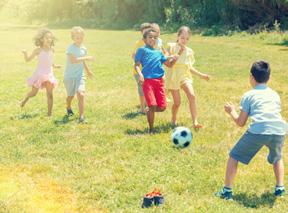


Select one picture you circled. Explain how light helps the people or plants.
Name:
Date:
LESSON 2 ACTIVITY GUIDE A
Predict what will happen in the investigation. Write your prediction.
During the investigation, record the temperature every minute.
Air Temperature (degrees Celsius) Before Blocking Sunlight
Air Temperature (degrees Celsius) with Sunlight Blocked
Air Temperature (degrees Celsius) After Blocking Sunlight
Name:
Date:
LESSON 2 ACTIVITY GUIDE B

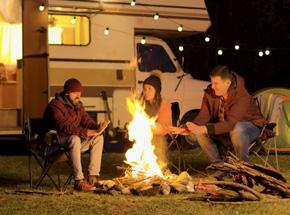

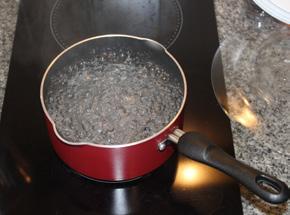
Is the Sun a source of thermal energy? Use evidence to explain your answer. Circle the pictures that show ways that people use thermal energy.
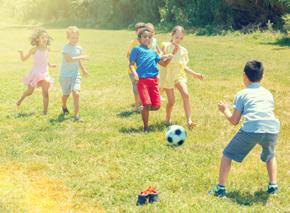
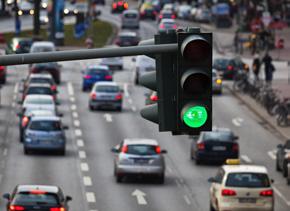
Name:
Date:
LESSON 3 A CTIVITY GUIDE A
Read the list of solar eclipse sound observations. Use this information to fill in the table.
Animals That Are Quiet During a Solar Eclipse
Animals That Make Sounds During a Solar Eclipse
Name:
Date:
LESSON 3 ACTIVITY GUIDE B


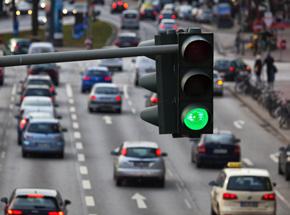


Circle the pictures that show ways that people or plants use sound energy.

Name: Date:
LESSON 4 ACTIVITY GUIDE A
What do the Sun and other stars look like in the sky? Draw.
The Sun Other Stars
Describe how the Sun and Alpha Centauri A are similar. Describe how they are different.
Name:
Date:
LESSON 4 ACTIVITY GUIDE B
Draw what you observe through the viewfinder.
The Sun Alpha Centauri A
Viewed from about centimeters away
Viewed from about centimeters away
Think about what people on Earth see when they observe the Sun and other stars. Why does the Sun look different from other stars?
Name:
Date:
LESSON 5 A CTIVITY GUIDE A
Write similarities and differences you notice about the planets.
Name:
Date:
LESSON 5 ACTIVITY GUIDE B
Record your observations and measurements of each sample.
Sample A
Sample B
Name:
Date:
LESSON 5 ACTIVITY GUIDE C
Show the planets in order of their distance from the Sun. Write a list or draw a diagram. Add labels to the diagram.
Name:
Date:
LESSON 6 ACTIVITY GUIDE
Draw a model showing the positions of the Sun, Earth, and the Moon. Draw the orbits of Earth and the Moon.
Describe the orbit of Earth. Describe the orbit of the Moon.
Name:
Date:
LESSON 7 ACTIVITY GUIDE
Observe the Moon and the Sun
Stand on the tape. Hold the Moon cutout an arm’s length away from your body. Write what you observe.
Stand on the tape. Hold the Moon cutout a hand’s length away from your body. Write what you observe.
Name:
Date:
LESSON 8 ACTIVITY GUIDE
Cut out the key terms related to the Solar System. Orbit Solar System Thermal energy
Place the key terms on this page. Draw arrows or other symbols to connect them. Write labels that show the relationships between the terms. After you finish your map, glue the terms to the page.
Great Minds® has made every effort to obtain permission for the reprinting of all copyrighted material. If any owner of copyrighted material is not acknowledged herein, please contact Great Minds for proper acknowledgment in all future editions and reprints of this logbook.
Page 93 (clockwise from top left), LumineImages/Shutterstock.com, Pixel-Shot/Shutterstock.com, PR Image Factory/Shutterstock.com, fotohunter/Shutterstock.com, Zmaj88/Shutterstock.com, DenisProduction.com/ Shutterstock.com, Ralf Gosch/Shutterstock.com, Iakov Filimonov/Shutterstock.com; page 97 (clockwise from top left), Zmaj88/Shutterstock.com, Ralf Gosch/Shutterstock.com, Fesus Robert/Shutterstock.com, wavebreakmedia/ Shutterstock.com, Iakov Filimonov/Shutterstock.com, DC Studio/Shutterstock.com; page 101 (clockwise from top left), LumineImages/Shutterstock.com, PR Image Factory/Shutterstock.com, Pixel-Shot/Shutterstock.com, fotohunter/ Shutterstock.com, wavebreakmedia/Shutterstock.com, Ralf Gosch/Shutterstock.com
All other images are the property of Great Minds.
The following writers, editors, reviewers, and support staff contributed to the development of this curriculum:
Amanda Abbood, Nashrah Ahmed, Maria Albina, Ana Alvarez, Lindsay Arensbak, Lynne Askin-Roush, Marissa Axtell, Brian Aycock, Keith Bannister, Nina Barcelli, Trevor Barnes, John Barnett, Greg Bartus, Michele Baskin, Koi Beard, Tocarra Bell, Brianna Bemel, Kerry Benson, Sanobar Bhaidani, David Blair, Ranell Blue, Jennifer Bolton, Sandy Brooks, Bridget Brown, Taylor Brown, Dan Brubaker, Carolyn Buck, Sharon Buckby, Lisa Buckley, Kristan Buckman, Becky Bundy, Sarah Bushnell, Eric Canan, Adam Cardais, Crystal Cizmar, Emily Cizmas, Rolanda Clark, Elizabeth Clarkin-Breslin, Christina Cooper, Kim Cotter, Karen Covington, Gary Crespo, Madeline Cronk, Lisa Crowe, Allison Davidson, Kristin Davis, Brandon Dawson, Megan Dean, Katherine DeLong, Julie Dent, Jill Diniz, Erin Doble, Delsena Draper, Amy Dupre, Jami Duty, Jessica Dyer, Lily Eisermann, Alison Engel, Sandy Engelman, Tamara Estrada, Lindsay Farinella, De Edra Farley, Ubaldo Feliciano-Hernández, Molly Fife, Lisa Fiorilli, Soudea Forbes, Mark Foster, Richard Fox, Peter Fraser, Reba Frederics, Liz Gabbard, Diana Ghazzawi, Lisa Giddens-White, Patricia Gilbert, Ellen Goldstein, Laurie Gonsoulin, Pamela Goodner, Kristen Gray, Lorraine Griffith, Dennis Hamel, Heather Harkins, Cassie Hart, Kristen Hayes, Sarah Henchey, Marcela Hernández, Abbi Hoerst, Jessica Holman, Missy Holzer, Matthew Hoover, Robert Hunter, Jennifer Hurd, Rachel Hylton, Robert Ingram Jr., Mamie Jennings, Reagan Johnson, Yuria Joo, Marsha Kaplan, Frankie Katz, Ashley Kelley, Robert Kelly, Lisa King, Suzanne Klein, Betsy Kolodziej, Sarah Kopec, Jenny Kostka, Drew Krepp, Rachel Lachiusa, Brittany Langlitz, Mike Latzke, Lori Leclair, Catherine Lee, Jennifer Leonberger, Jessica Levine, Caren Limbrick, Latoya Lindsay, Sarah Lomanno, Katherine Longo, Scott Loper, Susan Lyons, Kristi Madden, David Malone, Carolyn Mammen, Katrina Mangold, Stacie McClintock, Miranda McDaniel, Megan McKinley-Hicks, Cindy Medici, Ivonne Mercado, Sandra Mercado, Kevin Mesiar, Patty Messersmith, Brian Methe, Patricia Mickelberry, Marisa Miller, Sara Montgomery, Melissa Morgan, Mackenzie Most, Lynne Munson, Mary-Lise Nazaire, Corinne Newbegin, Darin Newton, Bekka Nolan, Tara O’Hare, Gillia Olson, Max Oosterbaan, Tamara Otto, Catherine Paladino, Meagan Palamara, Christine Palmtag, Mallory Park, Marya Parr, Joshua Paschdag, Emily Paulson, Emily Peterson, Margaret Petty, Nina Phelps, Jeffrey Plank, Judy Plazyk, Amelia Poppe, Lizette Porras, Jeanine Porzio, Jennifer Raspiller, Dan Ray, Brianna Reilly, Jocelyn Rice, Leandra Rizzo, Sally Robichaux, Cortni Robinson, Jeff Robinson, Todd Rogers, Karen Rollhauser, Allyson Romero, Angel Rosado Vega, Carol Rose, Angela Rothermel, Kim Rudolph, Megan Russo, Isabel Saraiva, Vicki Saxton, Michelle Schaut, Lauren Scheck, Gina Schenck, Stephanie Schoembs, Amy Schoon, Jesse Semeyn, Rudolph Shaffer, Khushali Shah, Nawshin Sharif,
Lawrence Shea, Aaron Shields, Cindy Shimmel, Maria Shingleton, Melissa Shofner, Erika Silva, Kerwyn Simpson, Laura Sirak-Schaeffer, Amy Snyder, Victoria Soileau, Rachel Stack, Isaac Stauffer, Leigh Sterten, Marianne Strayton, Mary Sudul, Lisa Sweeney, Elizabeth Szablya, Annie Wentz Tete, Heidi Theisen, Brian Thompson, Lauren Trahan, Olga Tuman, Kimberly Tyler, Jennifer VanDragt, Tracy Vigliotti, Freddy Wang, Lara Webb, Dave White, Charmaine Whitman, Erica Wilkins, Tiffany Williams, Erin Wilson, Mark Wise, Glenda Wisenburn-Burke, Armetta Wright, Howard Yaffe, Nazanene Yaqubie, Christina Young, Amy Zaffuto, Cat Zarate, and Suzanne Zimbler.
We are grateful for the many educators, writers, and subject-matter experts who made this program possible.
Tricia Boese, Thomas Brasdefer, Andrew Chen, Arthur Eisenkraft, Pat Flanagan, Rachel Gritzer, Fran Hess, Kim Marcus, Fred Myers, Jim O’Malley, Neela Roy, Ed Six, and Larry Stowe
If you throw a ball, where will it land? You can probably predict its motion. But what if you throw a ball inside a spaceship? Compare how objects move on Earth with how they move in space. Use special machines to investigate how forces affect the motion of everything around you.
In the Spotlight: Why is the Sun so bright? What can cause the sky to get dark in the middle of the day? To find answers, investigate how an object’s distance affects what you see, and build a model of objects in space. Along the way, ask yourself, How does my new knowledge help me understand the world?
1 EARTH CHANGES with Spotlight Lessons on Changes in Mater
2 SURVIVAL AND CHANGE
3 FORCES AND MOTION with Spotlight Lessons on the Solar System
Triple Gong, 1951
Alexander Calder, American, 1898–1976
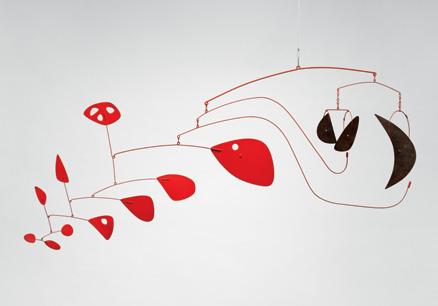
Painted steel, painted wire, and brass
National Gallery of Art, Washington, DC, USA
© 2019 Calder Foundation, New York/Artists Rights Society (ARS), NY Courtesy National Gallery of Art, Washington, DC, gif of Mr. and Mrs. Klaus G. Perls
ISBN 979-8-88588-544-7
Great Minds® brings teachers and scholars together to craft exemplary instructional materials that inspire joy in teaching and learning. PhD Science®, Eureka Math®, Eureka Math2 ®, and our English curriculum Wit & Wisdom® all give teachers what they need to take students beyond rote learning to provide a deeper, more complete understanding of the sciences, mathematics, and the humanities.